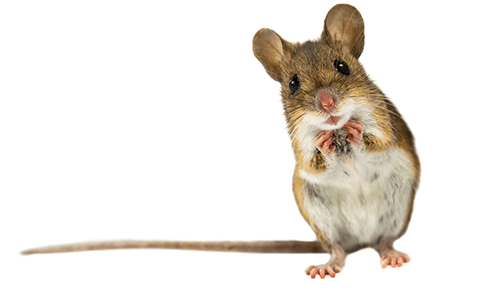The phrase “mouse trap” brings to mind methods of trapping mice, rats or other rodents, or the children’s board game that involves a plastic Rube Goldberg-like contraption to catch mice and win. In the board game, the goal is to capture all of your opponents’ mice while keeping your mouse safe from capture. As the game is played, a familiarity with the spaces on the board gives players experience with where they can escape the mouse trap. Rodents have similar experiences; watching videos of rodents, they get faster each time they move through a maze, and the goal is the food at the end of the maze. Think of the maze as a structure, perhaps a home or office. Everything that can be done to prevent rodents from entering the maze helps prevent rodents from establishing themselves in the structure.
The primary goal of pest management professionals (“PMPs”) developing a rodent management program is to prevent rodents from entering structures. It is much easier to control a pest outside of the maze than once it has entered the maze. Gaps or openings in structures are a way in. Mice need a smaller gap in comparison to rats; but as a general rule of thumb, if you can see light, then they can get in. Inspecting for these gaps is critical to a successful pest management program. A good PMP will identify and communicate the problem areas long before rodent activity is seen. Once the gaps are found they should be closed or filled in with copper mesh or a sealant.
Cheese is often used in movies, cartoons, and in the aforementioned board game as rodents’ main food source. However, rodents eat a variety of foods. PMPs should inspect the structure exterior for trash debris close to the structure and around the dumpster area. Rodents have a well-developed sense of smell and an overflowing or loose trash can attract them toward a structure in search of food or soft nesting material. Once they are near the structure, they will look for shelter in or around the structure.
Preventing rodents from entering the structure is only one part of a rodent management program. Monitoring for rodent activity helps PMPs establish current activity by use of bait or glue boards. Exterior monitoring is important to aid in the prevention of getting rodents into the maze. A structure can have rodent activity on the exterior, but no activity on the interior. Remember those gaps; if they are sealed, then the only way in is through the door. Once rodents have entered the structure then interior monitors are used to evaluate the success of the rodent management program.
The board game Mouse Trap has an elaborate mechanical trap for mice that includes bait, gravity, a bathtub, and a net to help capture mice. PMPs have a variety of choices for mechanical traps. Some monitoring devices can serve double duty and can contain a snap trap or glue board. Some more recent products can be placed in difficult-to-reach areas such as on pipes close to the ceiling, or come in a variety of different styles (one of which resembles a dinosaur’s jaw). PMPs typically bait the mechanical traps with a strong-smelling food attractant or bait, such as peanut butter with anchovy oil. The bait may smell bad or very strong to humans, but can be extremely attractive to the rodents.
There are many great and funny quotes about building a better mouse trap and mice becoming harder to catch; unfortunately, this is true. Rodents make choices that are often due to previous experience. Think back to the videos of lab rats moving through the maze – each time the rodent goes through the maze they leave a scent of where they were. Each time the rodent or a family member uses the same runway through the maze the scent gets stronger and becomes more familiar. Objects such as traps or monitors placed in the runway may be investigated or avoided by jumping or moving around. It is the PMP’s experience, persistence, and knowledge of the structure and rodent behavior that will capture rodents.
Moving around the Mouse Trap board, there is one other type of rodent control represented in the game. One of the Mouse Trap boards has a picture of a cat and another of a dog. The cat looks healthy and fat, as if it had just eaten a mouse or two. The use of biological organisms to control pest populations is called biological control. PMPs don’t use biological control, but they do need to be aware of pets and small children when determining which control methods they are going to use. Bait stations are designed to be tamper-proof, but the possibility of tampering, loose bait, or secondary poisoning should be considered when determining which rodent control methods to use.
The most important part of rodent management is communication, documentation, and an understanding that the management program is a partnership between the PMP and the structure representatives. The management program should be proactive and preventative. Once rodents have entered a structure, the reactive approaches can take time to be effective; but with persistence and knowledge of rodent behavior, the program can go back to being proactive. So dig out Mouse Trap, roll the dice or spin the spinner, and may all the rodents be captured.





 Wayne Srsen
Wayne Srsen 

